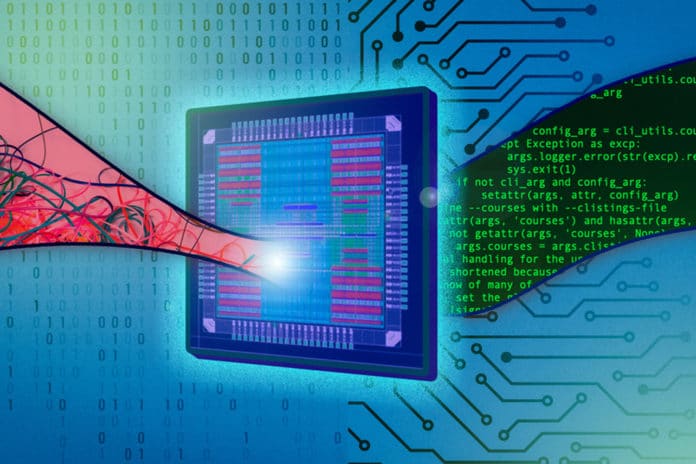A newly developed silicon chip can decode any code, regardless of its structure, with maximum accuracy. The chip, developed by scientists at MIT, Boston University, and Maynooth University in Ireland, uses a universal decoding algorithm called Guessing Random Additive Noise Decoding (GRAND).
During data transmission, data is sometimes affected by noise or energy that disrupts the signal. When such data reaches its destination, the decoding algorithm consults its codebook and uses the hash structure to guess what the stored information is.
The GRAND algorithm identifies the noise that affects the data. Then, by using a noise pattern, the algorithm deduces the original information. GRAND generates a series of noise sequences in the order they are likely to occur, subtracts them from the received data, and checks to see if the resulting codeword is in a codebook.
Despite being random, the noise has a probabilistic structure that allows the algorithm to guess what it might be.
This newly developed chip has the following features:
- Eliminates the need for multiple, computationally complex decoders.
- Increased efficiency.
- Effectively decode any moderate redundancy code with only about a microsecond of latency.
- Can seamlessly switch between two codebooks.
The GRAND chip uses a three-tiered structure, starting with the simplest possible solutions in the first stage and working up to longer and more complex noise patterns in the two subsequent stages. Each stage operates independently, which increases the throughput of the system and saves power.
It has two Static RAMs: one that can crack codewords, while the other loads a new codebook and then switches to decoding without any downtime.
During testing, the chip decoded any moderate redundancy code up to 128 bits in length, with only about a microsecond of latency.
Another interesting fact is that the chip not only works with legacy codes but could also be used with codes that haven’t even been introduced yet.
Muriel Médard, the Cecil H. and Ida Green Professor in the Department of Electrical Engineering and Computer Science, said, “In the lead-up to 5G implementation, regulators and communications companies struggled to find consensus as to which codes should be used in the new network. Regulators ultimately chose to use two types of traditional codes for 5G infrastructure in different situations. Using GRAND could eliminate the need for that rigid standardization in the future.”
“The GRAND chip could even open the field of coding to a wave of innovation.”
“For reasons, I’m not quite sure of, people approach coding with awe, like it is black magic. The process is mathematically nasty, so people use codes that already exist. I’m hoping this will recast the discussion, so it is not so standards-oriented, enabling people to use codes that already exist and create new codes.”
The research will be presented at the European Solid-States Device Research and Circuits Conference next week.
